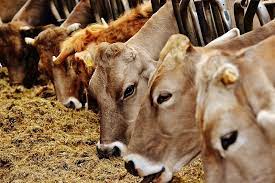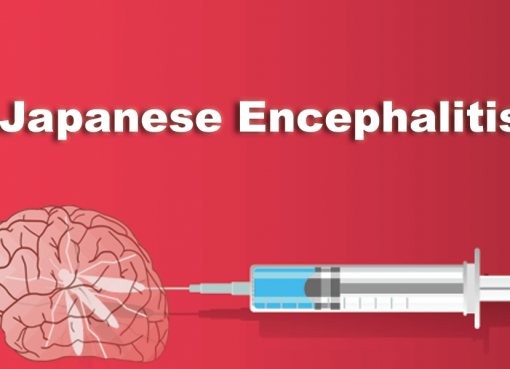Urea is a small organic compound that is very rich in nitrogen (44.96% N). Use of urea is very wide in ruminant feeding leading to improvement of nitrogen efficiency in cattle. Urea is an important source of rumen degradable protein (RDP) and has a high density of protein equivalent (262 to 292%). Through efficiency of urea utilization is more and that can replace highly economic protein source. Urea rapidly solubilises in the ruminal environment and converted into NH3 which may be incomplete by rumen bacteria, leading to accumulation and absorption of ammonia and subsequent excretion of nitrogen in the urine.
The utilization of non-protein nitrogenous substance compound by ruminants as a useful nitrogen source has been recognized for over 100 years. Approaching the end of the 19th century. Zuntz (1891) proposed a theory that bacteria in the forestomach of the ruminants could utilize simple nitrogen components such as amides or ammonia to produce microbial proteins in the small intestine. By 1936, much work had been done in the area as the famous biochemist Hans A. Krebs, known for his Nobel award winning work in discovering the citric acid cycle, presented a review (Krebs, 1937) citing over 100 references with conflicting evidence with regard to the theory proposing that ruminants could utilize non-protein nitrogenous substance. In 1939, Hart et al. showed rather definitively, in long term growth/slaughter and milk production trials with cattle, that diets with included non- protein nitrogenous substance resulted in improved protein deposition and milk production over low protein controls. Similar results were obtained by other authors over the next few years for both growing ruminants (Harris and Mitchell, 1941; Loosli et al., 1949) and for milk production (Owen et al., 1943). In 1949, Loosli et al. were the first to feed purified diets to ruminants (sheep and goats) in which the only source of nitrogen was urea. Duncan et al. (1953) demonstrated that all amino acids required by the animals were synthesized in significant quantities by microbial populations in the rumen. Finally, a series of long-term studies on dairy cattle were conducted by the Nobel prize laureate and animal scientist Artturi Virtanen, in which he demonstrated that dairy cattle were able to live, reproduce and produce moderate amounts of milk on a protein free diet (Virtanen, 1966). In the recent era various slow-release urea and nano urea products have been developed.
The first scientist to work with nano urea was Ramesh Raliya. He has been working on developing nano urea in India from 2015 and has been an active participant in the nationwide trial of nano urea from 2019. The innovative product was designed in Kalol, Gujarat, at Indian farmers fertilizer cooperative limited (IFFCO) Nano Biotechnology Research Center (NBRC).
Slow-release urea
Over the last three decades, coating technology has been utilised to produce slow-release urea (SRU) products that degrade less rapidly in the rumen with potential claims of improved synchronisation of ruminal ammonia with energy digestion for microbial protein synthesis. These products are usually available for feeding all ruminant species (cattle, buffalo, sheep and goat). Wanapat (2009) provided an extensive review of the scientific literature that highlighted the potential efficacy of slow-release urea in enhancing the efficiency of rumen nitrogen capture, microbial protein synthesis, fibre digestion and improved ruminant production. Moreover, slow – release urea could be an eco-friendly alternative for replacing a portion of vegetable protein sources and the slow formation of ammonia in the rumen could ensure no negative impacts on nitrogen excretion (Sinclair,2012 and Reddy, 2019).
Low efficiency of utilization of dietary urea has been attributed to the rapid hydrolysis to NH3- in the rumen by microbial enzymes which occurs at a higher rate than its utilization by rumen bacteria, leading to ruminal accumulation and absorption of ammonia and subsequent excretion of urea in the urine (Golombeski et al., 2006; Highstreet et al., 2010).
Therefore, attempts have been made for long to produce a form of urea that would degrade more slowly in the rumen, potentially resulting in increased incorporation of ammonia into microbial populations and consequently lower excretion of urea in the urine. Early slow- release urea products include biuret, an extensively studied compound that is formed by the condensation of two molecules of urea. Effect of using biuret has been studied in ruminant diets since the 1970s (Fonnesbeck et al., 1975). Starea, a product produced by cooking grains and urea together to form a product that degraded more slowly (Deyoe et al., 1968) and urea phosphate (Oltjen et al., 1968) have also been tried.
More recently, slow- release of urea in the rumen has been achieved by binding urea to lignin (Castro et al., 1999) or calcium chloride (Huntington et al., 2006a) or by encapsulating the urea particles with polymers (Galo et al., 2003) or lipids (Owens et al., 1980; Garrett et al., 2005) to reduce the rate of release in the rumen. The effect of slow- release urea is often compared to that of regular feed grade urea to determine its efficacy. Experiments where slow- release urea is compared to other true protein sources are somewhat confounded by the presence of amino acids, nucleotides, fermentable energy, and other compounds that are present in the feed, that may affect ruminal utilization of nitrogen.
Concept of nano urea
This new product is expected to replace the usage of urea granules, one of the most widely used fertilisers in farmlands across the world. Conventional granular urea is one of the most important nitrogenous fertilizers in the country, with a high nitrogen content of 46 per cent, and is available at one of the lowest market prices. Nano urea is the best green technology which prevents the occurrence of soil pollution and acts as a catalyst in changing the future of farmers. On the other hand, while urea helps increase crop yield, it is also harmful to the environment if used frequently and excessively. According to studies, plants do not utilize approximately 40% of urea resulting in its dispersion in soil and groundwater. In addition, excess urea emits nitrous oxide, a harmful greenhouse gas that can harm the environment. However, without urea, farmers face several challenges, including low crop yields and an inability to earn a living. Indian farmers fertilizer cooperative limited (IFFCO) introduced the first nano urea, a breakthrough solution for the drawbacks observed while using urea. Indian farmers fertilizer cooperative limited (IFFCO) has been working for the past five decades for the farmers with the mission of improving crop yields, enhancing soil fertility, and enriching the lives of farmers with social and economic independence. Nano urea is a nanotechnology based revolutionary agri-input which provides nitrogen to plants. When compared to conventional urea prill, it has a desirable particle size of about 20-50 nm and more surface area (10,000 times over 1 mm urea prill) and number of particles (55,000 nitrogen particles over 1 mm urea prill). Indian farmers fertilizer cooperative limited (IFFCO) nano urea is the only nano fertilizer approved by the Government of India and included in the Fertilizer Control Order (FCO). It is developed and patented by Indian farmers fertilizer cooperative limited (IFFCO). Application of one bottle of nano urea can effectively replace at least one bag of urea. Nano urea is cost-effective and required in low quantities. The most critical benefit of using nano urea for agriculture is its minimal impact on the environment. This will result in reducing the release of greenhouse gases and improve the quality of air and water. While liquid nano urea is up to 85% efficient, its conventional counterpart is only about 25% efficient. This higher effectiveness is mostly due to nanotechnology, which makes it possible to design extremely small particles with greater surface-to-mass ratios, which aids in the regulated delivery of crop nutrients. Nano urea is tested for toxicity and biosafety. It is recommended for use and is safe for humans, animals, birds, and soil organisms. With 40,000mg/ml of nitrogen in a 500 ml nano urea bottle. It can be sufficient for providing nitrogen. The nanotechnology-based product is the most advanced nitrogen fertilizer with enhanced efficiency. Nano urea is cost-effective and required in low quantities. The most critical benefit of using nano urea for agriculture is its minimal impact on the environment. This will result in reducing the release of greenhouse gases and improve the quality of air and water. Nano urea is produced by an energy- efficient, environment- friendly production process with less carbon footprints.
References:
Castro, F.; Selmer-Olsen, I.; Ørskov, E. and Johnsen, F. (1999). Lignin as a carrier for feed grade controlled-release urea. Journal of Animal Science, 79: 247- 253.
Duncan, C. W.; Agrawala, P.I.; Huffman, F.C. and Luecke, W.R. (1953). A Quantitative Study of Rumen Synthesis in the Bovine on Natural and Purified Rations. The Journal of Nutrition, 49: 41-49.
Fonnesbeck, P.V.; Kearl, C.L. and Harris, E.L. (1975). Feed Grade Biuret as a Protein Replacement for Ruminants. A Review. Journal of Animal Science, 40: 1150- 1184.
Galo, E.; Emanuele, S.; Sniffen, C.; White, J. and Knapp, J. (2003). Effects of a polymer coated urea product on nitrogen metabolism in lactating Holstein dairy cattle. Journal of Dairy Science, 86: 2154-2162.
Golombeski, G.L.; Kalscheur, K.F.; Hippen, A.R. and Schingoethe, D.J. (2006). Slow-release urea and highly fermentable sugars in diets fed to lactating dairy cows. J. Dairy Sci., 89: 4395-4403.
Harris, L.E. and Mitchell, H.H. (1941). The Value of Urea in the Synthesis of Protein in the Paunch of the Ruminant. The Journal of Nutrition, 22: 183-196.
Hart, E. B., Bohstedt, G., Deobald, J.H. and Wegner, I.M. (1939). The Utilization of Simple Nitrogenous Compounds such as Urea and Ammonium Bicarbonate by Growing Calves. Journal of Dairy Science, 22:785-798.
Highstreet, A.; Robinson, P.H.; Robison, J. and Garrett, J.G. (2010). Response of Holstein cows to replacing urea with a slowly rumen released urea in a diet high in soluble crude protein. Livestock Sci., 129: 179-185.
Krebs, K. (1937). Der Wert der Amide bei der Fütterung des Rindes. Historische Betrachtung der Entwicklung der Amidfrage, Kritische Wertung des Standes unserer heutigen Kenntnisse. Biedermann’s Zentralbl. Agrikulturchem. Abt. B. Tierernähr, 9: 394-507.
Loosli, J.K.; Williams, H.H.; Thomas, E.W.; Ferris, H.F. and Maynard, A.L. (1949). Synthesis of Amino Acids in the Rumen. Science, 110:144-145.
Oltjen, R. R.; Slyter, L.L.; Kozak, S.A. and Williams, E.E. (1968). Evaluation of Urea, Biuret, Urea Phosphate and Uric Acid as NPN Sources for Cattle. The Journal of Nutrition, 94: 193-202.
Owen, E. C.; Smith, A.J. and Wright, C.N. (1943). Urea as a partial protein substitute in the feeding of dairy cattle. Biochem. J., 37: 44-53.
Reddy, P.R.K.; Kumar, D.S.; Rao, E.R.; Seshiah, C.V.; Sateesh, K.; Reddy, Y.P.K. and Hyder, I. (2019). Assessment of eco-sustainability vis-à-vis zoo-technical attributes of soybean meal (SBM) replacement with varying levels of coated urea in Nellore sheep (Ovis aries). Plos one, 14:1–20.
Sinclair, L.; Blake, C.; Griffin, P. and Jones, G. (2012). The partial replacement of soybean meal and rapeseed meal with feed grade urea or a slow-release urea and its effect on the performance, metabolism and digestibility in dairy cows. Animal, 6: 920–927.
Virtanen, A.I. (1966). Milk Production of Cows on Protein-Free Feed. Science, 153: 1603- 1614.
Wanapat, M. (2009). Potential uses of local feed resources for ruminants. Trop. Anim. Health Prod., 41 (7):1035-49. doi: 10.1007/s11250-008-9270-y.
Authors information:
- Dr Mamata Joysowal, Assistant Professor, Animal Nutrition Department, College of Veterinary Science, AAU, Khanapara, Ghy-22, Email: mamtajaiswal525@gmail.com
- Tapas Kumar Dutta, Principal Scientist, Eastern Regional Station, ICAR-NDRI, Email: tkdcirg@gmail.com
- Dr Bibeka N. Saikia, Professor, Animal Nutrition Department, College of Veterinary Science, AAU, Khanapara, Email: saikia5@gmail.com
- Gunaram Saikia, Professor, Animal Nutrition Department, College of Veterinary Science, AAU, Khanapara, Email: gunaram.saikia@aau.ac.in
- Lakhya J. Borah, Assistant Professor, Department of Animal Nutrition, College of Veterinary Science, AAU, Khanapara, lakhyajyotiborah@aau.ac.in




